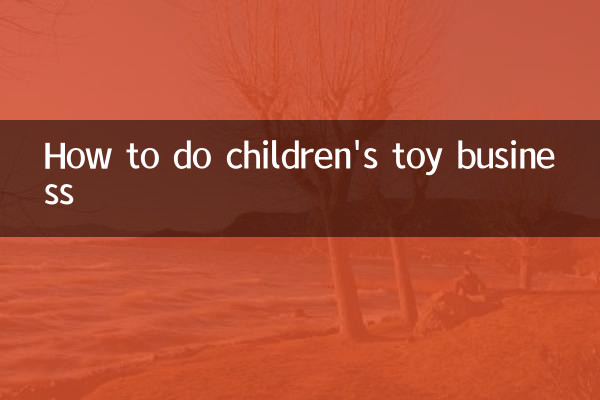Title: How to do children's toy business
In recent years, the children's toy market has continued to heat up, especially with the opening of the second-child policy and the upgrading of family education concepts, parents' demand for toys has become increasingly diversified. This article will combine popular topics and hot contents on the Internet for the past 10 days to structure the analysis of how to do a good job in children's toy business.
1. Market trend analysis

According to recent hot search data, hot topics in the children's toy market are mainly concentrated in the following aspects:
| Hot Topics | Search popularity | Key Audiences |
|---|---|---|
| STEM Educational Toys | high | Parents of children aged 3-12 |
| Environmentally friendly toys | Medium-high | A healthy family |
| Smart interactive toys | high | Parents of technology enthusiasts |
| Traditional cultural toys | middle | A family with strong cultural heritage awareness |
2. Product selection strategy
Choosing the right product is the key to the success of the toy business. The following is an analysis of the toy categories that have been sold recently:
| Category | Price range | Sales Channel | Profit ratio |
|---|---|---|---|
| Assembled building blocks | RMB 50-300 | Combining online and offline | 40-60% |
| Electronic learning machine | RMB 200-800 | Brand store | 30-50% |
| Plush toys | RMB 30-150 | E-commerce platform | 50-70% |
| DIY handmade toys | 20-100 yuan | Community group buying | 60-80% |
3. Marketing and promotion methods
Effective marketing can quickly open up the market. The following are several promotion methods with significant results in the near future:
1.Short video platform promotion: Display toy gameplay through platforms such as Douyin and Kuaishou to attract parents' attention.
2.KOL cooperation: Cooperate with maternal and infant bloggers to conduct product evaluation and recommendation.
3.Community Marketing: Create a mother group and regularly share parenting knowledge and toy discount information.
4.Offline experience activities: Hold toy trial activities in shopping malls or communities to increase brand exposure.
4. Supply Chain Management
A stable supply chain is the cornerstone of the toy business. Here is a comparison of different types of suppliers:
| Supplier Type | Advantages | Disadvantages | Suitable for scale |
|---|---|---|---|
| Brand Agents | Quality guaranteed | Higher price | Medium and large stores |
| Direct supply from the factory | The price advantage is obvious | High order quantity requirements | Bulk purchase |
| Cross-border e-commerce | New and unique products | Long logistics cycle | Specialty store |
| Used toy recycling | Extremely low cost | Need to be disinfected | Environmental protection concept store |
5. Business risk warning
1.Product quality and safety: Children's toys must comply with the national 3C certification standards.
2.Inventory Management: Toys are updated quickly, and inventory needs to be controlled to avoid backlog.
3.Seasonal fluctuations: The peak sales are around the holidays, and stocks are required in advance.
4.Intellectual Property Risk: Avoid selling infringing products to avoid legal risks.
6. Sharing of successful cases
Recently, an internet celebrity toy store achieved monthly sales of more than 500,000 yuan through the following strategies:
1. Selected 10 popular STEM toys as the main products.
2. 3 toy gameplay videos are posted on TikTok every week.
3. Cooperate with local kindergartens to carry out toy experience classes.
4. Establish a membership system and provide toy rental services.
Conclusion:
The market for children's toys has huge potential, but competition is becoming increasingly fierce. A successful toy business requires precise grasp of market trends, selecting marketable products, establishing an efficient supply chain system, and adopting innovative marketing strategies. I hope that the structured analysis of this article can provide valuable reference for your toy entrepreneurship journey.

check the details

check the details